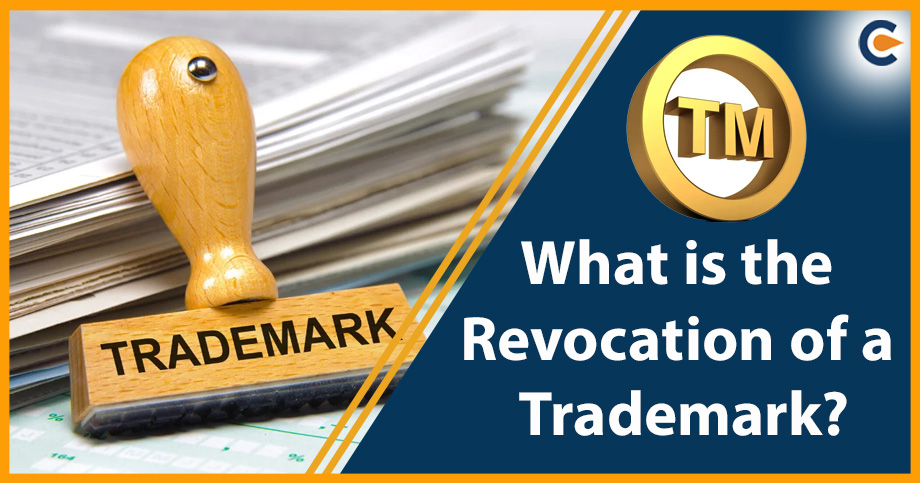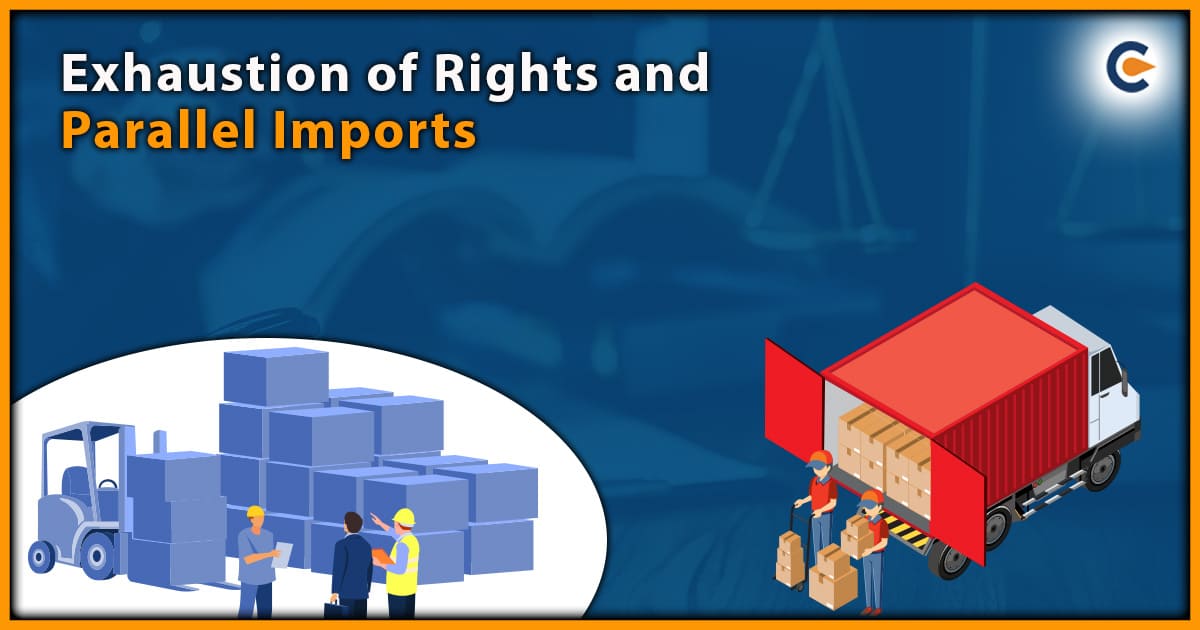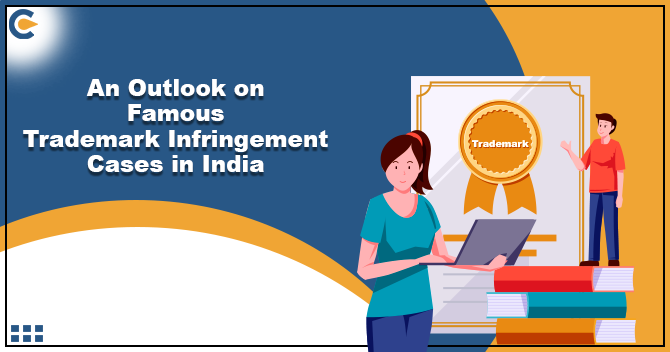Revocation of trademark refers to the legal process of cancelling a trademark registration, making it no longer valid. The purpose of the trademark revocation is to maintain the integrity of the trademark system and to prevent the registration of a trademark that does not meet the legal requirements. Revocation of trademarks is crucial for the protection of consumers, as it ensures that only trademarks that meet legal requirements are used. Revocation of trademarks also helps to maintain the distinctiveness of trademarks, preventing confusion among consumers. By revoking trademarks that no longer meet the legal criteria, the trademark office helps to maintain the public’s trust in the trademark.
Who Can Revoke The Trademark?
In India, a trademark can be revoked by the Registrar of Trademarks based on the provisions of The Trademark Act, 1999[1] and The Trademark Rules, 2002. The Registrar can revoke a trademark if it violates any provisions of the law, such as if it is not used for a specified period, if it is similar or if it is misleading or offensive in nature. In addition, a trademark can also be revoked if it is challenged by an aggrieved party, a person who is interested in that trademark or the trademark owner fails to renew it. The application of revocation/cancellation of the trademark is to be filled to the Registrar of Trademark or Appellate Board.
Causes of Revocation of Trademark
The revocation of trademark may occur for several reasons, including:
- Non-Use Of Trademark:
If a trademark has not been used for an extended period, it may be considered abandoned and subject to revocation. The Trademark office requires that trademarks be used in commerce and trade in order to maintain their registration. Section 47 of The Trademarks Act, 1999, states that the Registrar can remove the trademark on the grounds of non-use.
The Registrar can revoke/cancel the trademark if it is not used for a continuous period of five years or more. When a third party is applying for such revocation, the petitioners have to provide evidence which will prove the non-use of the trademark for five or more years.
- Misrepresentation Of Trademark Information:
Giving inaccurate or misleading information regarding a trademark when obtaining or maintaining a trademark registration is referred to as misleading trademark information. When the owner of the trademark gives false information about the owner of the product or services connected to the trademark or the date of use of the trademark, if the trademark includes false or misleading information, then the trademark is subject to revocation.
- Change In Ownership:
A trademark registration may be revoked if it is transferred to another entity without proper authorization or if the transfer results in a change in the goods and services associated with the trademark. A change in ownership must be appropriately documented and registered with the appropriate authorities in order for the trademark office to recognize it.
The change in ownership may also have an effect on the trademark’s legal status. The trademark may be subject to revocation, for instance, if the new owner fails to use it in commerce or fails to comply with the legal conditions for trademark registration.
- Infringement Of Trademark Rights:
If the trademark is found to be infringing on the rights of another party, it may be subject to revocation. This can occur if the trademark is similar to an existing trademark and needs to be clarified among consumers.
- No Bonafide Intention:
A revocation of trademark might take place if the trademark was registered without any bonafide intention.
Clinique Laboratories LLC & Anr. v/s Gufic Limited & Anr is related to a trademark infringement and revocation lawsuit in India. Clinique Laboratories LLC had already registered a trademark, “Clinique”, for its own skincare and cosmetic products. The defendants were using the trademark, which included the word “cliniq”. The use of the word “cliniq” was likely to confuse consumers. The plaintiff had filed for the revocation of trademark “cliniq”. The court decided in favour of the court and said that both the marks were indeed confusing, and the consumers may mislead by this similarity. The Hon’ble Court decided to give a temporary injunction until the competent authority disposed of the case.
Process of Revocation of Trademark
An application is to be filed through Form TM-O for the cancellation of the trademark. The TM-O Form is filed for the removal or cancellation of the trademark. The application will contain all the information in detail and will explain the reasons for the revocation of trademark. After the application is filed, all the concerned parties will be informed about the same. The affected parties can file a counterstatement if they want. The counterstatement is to be filed within three months from the date on which the application was received.
Both parties will be given a chance to be heard and will also be allowed to give a piece of evidence if present. After which the hearing takes place, the register, after hearing both sides and inspecting the evidence filed by the concerned parties, will make a decision.
Consequences of Revocation of Trademark
The revocation of a trademark can have severe consequences for the owner of the trademark. Some of the expected consequences of trademark revocation are:
- Loss Of Exclusive Rights
The main aim of a trademark is to provide the owner with the exclusive rights to use the trademark. The owner of a trademark forfeits their sole right to use it if their trademark is cancelled. As a result, other parties are now able to utilize the trademark, which could lead to consumer confusion and lessen the original brand’s uniqueness.
- Financial Losses
The revocation of a trademark can cause the owner of the trademark to suffer considerable losses. This may happen if the owners are ordered to stop using the name and rebrand their goods or services or if they must pay compensation to the other party for trademark infringement.
- Loss Of Reputation
A revocation of a trademark can negatively affect a company’s or brand’s reputation. Consumers could link products bearing the revoked trademark to defective or fake goods, which could damage the companies of the brand’s credibility and reputation.
- Legal Costs
The owner of the trademark may incur hefty legal fees as a result of the trademark being revoked. This might happen if the trademark owner is forced to take part in legal actions to protect their rights or to have the infringing trademark cancelled.
- Difficulty In Enforcing Trademark Rights
Enforcing trademark rights can be challenging when a trademark has been revoked/cancelled. It may be challenging for the owner to do so in future. This is due to the trademark’s diminished distinctiveness, and it may be challenging to establish that it is separate from other trademarks.
Prevention of Revocation of Trademark
Preventing the revocation of trademarks is essential for businesses and individuals who want to protect their trademark rights and the reputation of their brand. Some of the ways to prevent trademark revocation include:
- Conducting a Trademark Search
It’s crucial to carry out a thorough trademark search before registering a mark to make sure it’s not currently being used by another party. This can assist in avoiding potential trademark infringement and cancellation.
- Registering the Trademark
In order to safeguard trademark rights, it is essential to register a trademark with the appropriate rules and regulations. This helps to prevent unauthorized use of the trademark by giving it legal protection.
- Updating the Trademark
Keeping the trademark current and renewing it whenever required is vital to avoid trademark cancellation. This keeps the brand from becoming generic or fading away and preserves its identity.
- Monitoring The Trademark Use
It is essential to keep an eye on how the trademark is being used in order to avoid potential trademark infringement and revocation. Regular trademark searches, internet platform monitoring and hiring a trademark monitoring agency can all be used to do this.
- Enforcing Trademark Rights
If the trademark infringement is found, it’s vital then to take action to uphold such rights and avoid the trademark’s cancellation. This could entail filing a lawsuit, negotiating a settlement or mailing cease-and-desist letters.
Conclusion
Trademark revocation is a legal process that can have significant consequences for a business and its brand image. The business may safeguard its trademark and guarantee its continuous use by being aware of the reasons for and procedures involved in the revocation of trademark, as well as how to prevent it. In order to prevent trademark infringement, it is crucial to use the trademark for business purposes regularly, update the trademark and monitor the trademark. A trademark registration must be protected and regularly updated by adhering to all the applicable laws and regulations.
Read Our Article: Procedures To Cancel The Trademark Application In India











